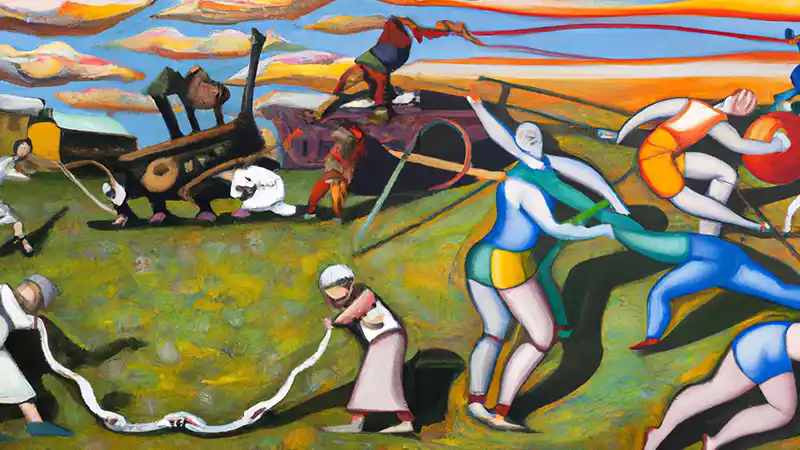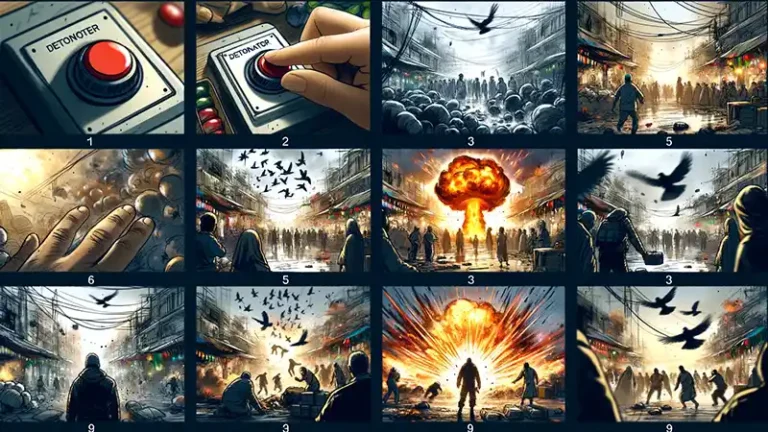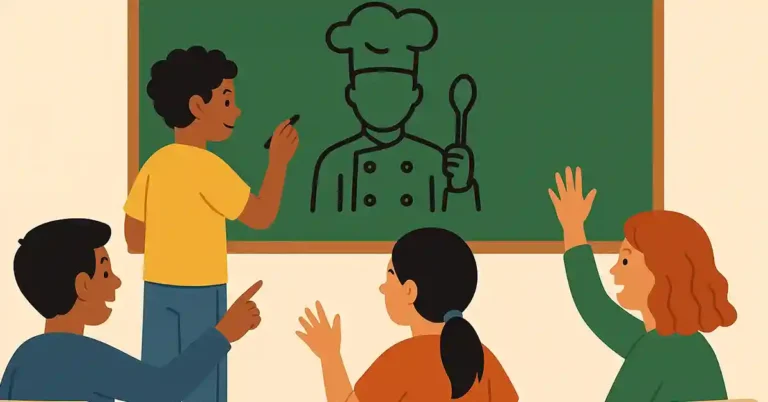45 Poetry Games for the Classroom Students will Love
I understand the magic of melding words together as someone who’s been both on the listening end of a riveting stanza and the teaching side of a poetic lesson. I’m thrilled to share with you these 43 poetry games for the classroom. These fun poetry activities are not just about rhyme schemes and verses, but about unlocking the vibrant world of emotions, experiences, and expressions that lie within each student. Dive in and turn these ideas into lesson plans that will transform your class into a haven of poetic wonder, where each child becomes a wordsmith ready to leave their indelible mark.
1. Haiku Hunt
Ah, the timeless beauty of a haiku! The Haiku Hunt is all about immersing students in the natural world and letting nature’s wonders spark their creativity. Begin by guiding your class outside, whether it’s to a school garden, park, or simply under a tree. Encourage them to observe the minutiae: the rustling leaves, the darting dragonflies, or the patterns of the clouds. With the traditional 5-7-5 syllabic format of a haiku in mind, students then pen down their short poems, encapsulating their observations and feelings about nature. It’s a wonderful way to combine outdoor learning with artistic expression.
Click here for the full Haiku Hunt outdoor poetry activity.
2. Exquisite Corpse
A game of surprise, collaboration, and creativity, the Exquisite Corpse is a poetic exercise in unexpectedness. Start by having each student write a line of poetry on a sheet of paper. Once done, they fold the paper to conceal all but the last line they’ve written and pass it to their neighbor. The next student then continues the poem, using the visible line as their cue. This process repeats until the sheet is filled or until everyone has contributed. When unfolded, the resulting poem is often a delightful and surprising blend of each student’s unique voice.
Click here for the full Exquisite Corpse lesson plan.
3. Acrostic Race
Ready, set, write! The Acrostic Race is a fast-paced game that combines quick thinking with poetic creativity. Start by choosing a word related to a theme you’re studying or a random word of your choice. Write this word vertically on the board. Challenge your students to come up with an acrostic poem using the word, where each line begins with the letters of the word in sequence. Set a timer to add an element of excitement. The student who crafts a complete, thoughtful acrostic the quickest is the winner. It’s a thrilling way to test their swift poetic skills and expand their vocabulary.
For the full acrostic race lesson plan, click here.
4. Musical Poems
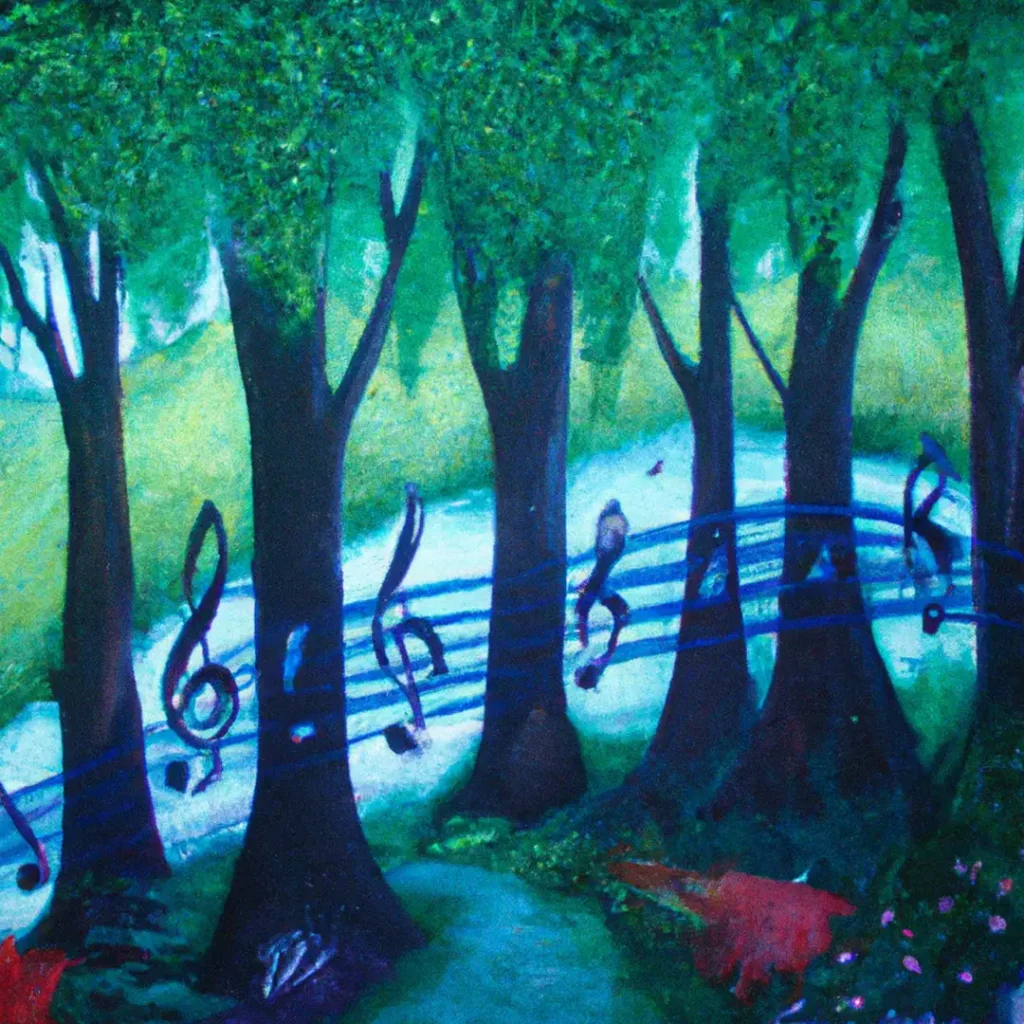
Turn up the volume and let the rhythm flow with Musical Poems! This game merges the world of music and poetry, allowing students to tap into their inner songwriters. Begin by playing a familiar or easy-to-follow melody for the class. Then, task your students with creating their own set of lyrics for that tune. Encourage them to consider the rhythm, mood, and theme of the melody as they write. Once penned, brave souls can even perform their pieces in front of the class, showcasing their poetic prowess and perhaps, hidden singing talents!
Click here for the full musical poems lesson plan.
5. Magnetic Poetry
Harness the power of magnetism to craft spontaneous and engaging poems! For this activity, prepare ahead with a set of magnetic words—these can be commonly used words in poetry, nouns, verbs, adjectives, or even some wildcards. Place them on a magnetic board, accessible to the students. The goal is simple: students approach the board and, using the words available, arrange them to create their own unique poems. It’s an exercise in restriction and creativity, as they must work with what’s before them. This game can be done individually or in teams, promoting either introspective thought or collaborative synergy.
Click here for the full magnetic poetry lesson plan.
6. Blackout Poetry
Dive into the world of artistic redaction with Blackout Poetry. For this game, give students a page from a book, newspaper, or printed article. Armed with black markers or dark-colored pencils, students are tasked with blacking out or obscuring most of the text, leaving only select words or phrases visible. The remaining, un-blackened words form the body of their poem. This encourages students to think critically about word choice, deriving new meaning from pre-existing text. The end product is not just a poem but a piece of visual art as well.
Click here for a full blackout poetry lesson plan.
7. Story to Poem
Narratives take on a lyrical twist in this activity! With Story to Poem, choose short stories that vary in themes and complexity. Distribute them among the students and challenge them to distill the essence of the story into a poem. They’ll need to capture the core emotions, the plot’s climax, or the characters’ arcs, condensing them into a poetic format. This exercise enhances comprehension and interpretation skills, allowing students to play with verse and structure as they translate prose to poetry. This one is great for National Poetry Month.
Click here for the full Story to Poem lesson plan.
8. Poetry Jenga
Balancing physical dexterity with poetic flair, Poetry Jenga is a game of steady hands and nimble minds. Begin with a Jenga set and write different poetic forms or topics on each piece, such as “sonnet,” “nature,” or “haiku.” As students play the game and pull out pieces, they are challenged to either discuss the form or topic written or pen a short poem based on it. This game blends the anticipation of the tower’s fall with the creative rush of on-the-spot poetic creation.
Click here for the full Poetry Jenga lesson plan.
9. Rhyme Time Challenge
Get ready to test linguistic agility with the Rhyme Time Challenge! In this exhilarating game, shout out a word to the class—perhaps something relevant to the lesson or whimsically random. With the clock ticking, students compete to develop as many rhyming words as possible. You can spice it up by offering points for creativity or using tiered difficulty levels for the base words. This activity enhances vocabulary and sharpens students’ phonetic awareness and quick thinking capabilities while getting them to think about rhyme scheme.
Click here for the full Rhyme Time Challenge lesson plan.
10. Metaphor Mingle
Dive deep into the realm of figurative language with Metaphor Mingle. In this interactive game, each student crafts an original metaphor. Once created, they mingle and share their metaphors with peers, either verbally or on written slips of paper. The fun twist? Rather than revealing the intended meaning immediately, other students attempt to decipher and guess the core of the metaphor. This game provides the perfect way to promote deeper understanding of metaphoric expressions, encourages creativity, and fosters interpretative discussions.
11. Pop Song Parody
Marry the beats of popular culture with poetic prowess in the Pop Song Parody game. Select a range of popular songs or let students pick their (appropriate) favorite song and task them with rewriting the lyrics, keeping the original melody in mind. The new lyrics can be relevant to a topic being studied, a humorous twist, or a completely original narrative. Once crafted, students can even perform their parodies, either acapella or with backing tracks. It’s a vibrant way to engage with poetry, musical rhythm, and contemporary hits all at once.
12. Slam Poetry
Unleash the expressive power of spoken word with a classroom Poetry Slam! In this platform, students craft and perform their original poems, pouring emotion, rhythm, and voice modulation into their recitations. You can set a theme or leave it open-ended, allowing each poet’s personal voice to shine. The classroom environment should be supportive and enthusiastic, celebrating each performance. For added excitement, invite guest judges or have peer evaluations. This activity is a great way to build confidence, foster self-expression, and highlight the emotive potential of poetry.
13. Found Poems
Transform the everyday into the extraordinary with Found Poems! This game invites students to delve into newspapers, sifting through headlines to extract words or phrases. Using these snippets, students construct their own poems, re-contextualizing the language to create new meaning. This is a fun way to sharpen their ability to identify potent words and encourages them to think creatively about context. With just a stack of newspapers and imagination, students create poetry that reflects the pulse of current events. It’s a great activity for middle school students.
14. Poetry Picnic
Celebrate the joys of verse under the open sky with a Poetry Picnic! Students are tasked with selecting a poem—either a personal creation or a cherished classic. On a sunny day, gather outdoors, be it in a school courtyard or a nearby park, laying out blankets and perhaps some snacks. One by one, students share their chosen poems, immersing the group in a medley of poetic voices and styles. This activity fosters a communal love for poetry and provides a refreshing change of learning environment.
15. Simile Stations
Dive deep into the art of comparison with Simile Stations. Transform your classroom into a mini-museum, setting up various stations with diverse objects—maybe a feather, a stone, a glass of water, or a piece of velvet. Small groups rotate between these stations, crafting similes to describe each object. For instance, “As light as a feather” or “Smooth as velvet.” This game heightens observational skills and enhances the students’ ability to draw imaginative parallels.
16. Poetry Pair Share
Experience the beauty of collaboration with Poetry Pair Share. In this two-part game, each student begins by writing half a poem, stopping at a climactic or intriguing point. Once their half is penned, they swap with a partner. The challenge now is to continue and complete the poem, maintaining its tone, style, and narrative. When done, pairs can share their collaborative masterpieces, reflecting on the blending of their poetic voices and styles.
17. Alphabet Poetry
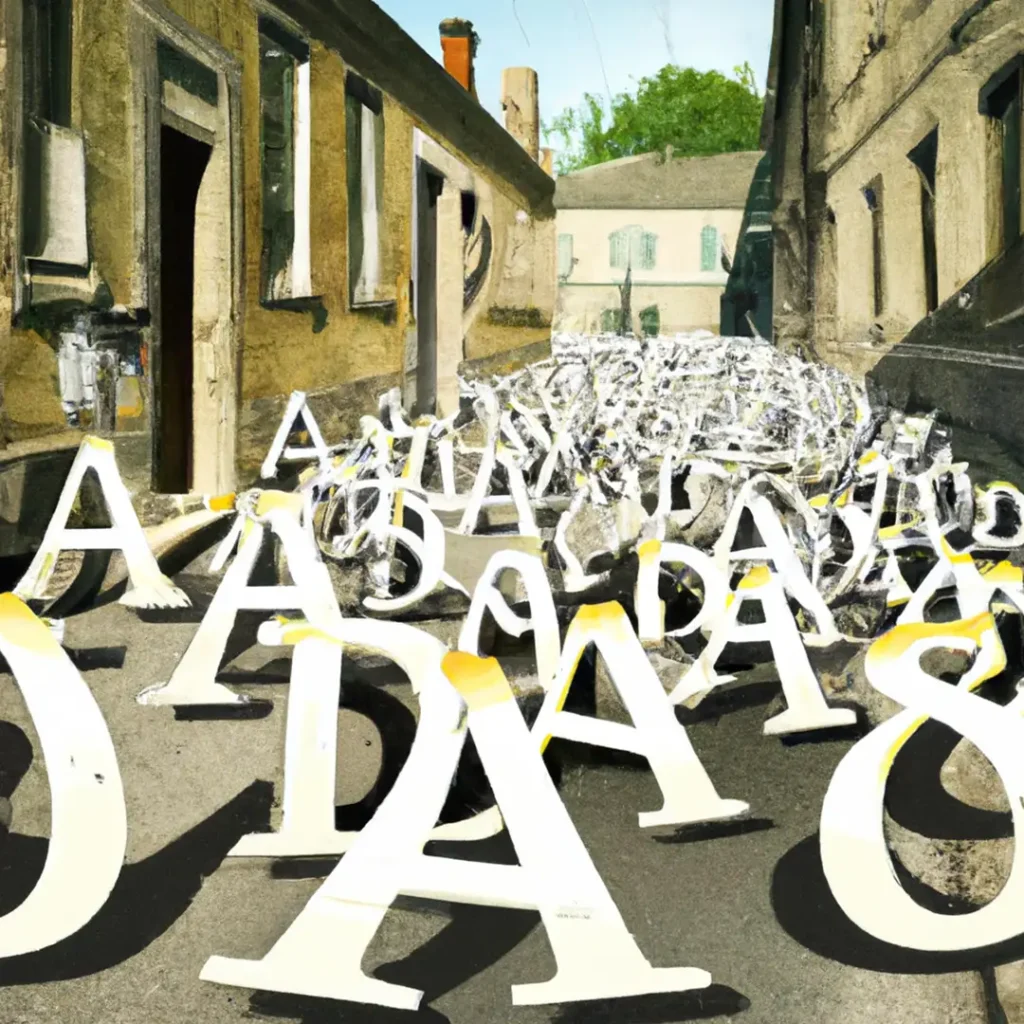
Embark on a lyrical journey from A to Z with Alphabet Poetry! This game challenges students to pen a poem where each subsequent line begins with the next letter of the alphabet. Starting with ‘A’ and culminating at ‘Z’, students weave a narrative or theme, ensuring a smooth flow and continuity. This activity tests their poetic creativity and ability to adhere to a structure, making every letter count in their poetic tale. They might even learn a few new words along the way!
18. Poetry Pictionary
Blend the vividness of imagery with the nuance of poetry in Poetry Pictionary. In this interactive game, students select a poem and then draw an illustration that captures its central theme or emotion. Once ready, they showcase their artwork, and the class tries to deduce the theme or the specific poem it represents. This game allows for artistic expression and emphasizes the importance of interpreting and visualizing poetic themes.
19. Poetic Potluck
Infuse culinary delights with poetic inspiration in the Poetic Potluck. For this delicious game, students choose a poem and prepare a dish or snack embodying its essence, theme, or imagery. During the potluck, as everyone savors the dishes, students explain how their culinary creation is inspired by their chosen poem. It’s a delightful blend of sensory pleasure, creativity, and poetic interpretation.
20. Emoji Emotion
Navigate the modern language of emojis to craft unique verses with Emoji Emotion. Begin by providing students with a sequence of emojis. These can range from facial expressions to objects and symbols. Their challenge? To write a poem inspired solely by these emojis. By translating digital symbols into words, students grapple with modern communication nuances, crafting fun and reflective poetry of today’s digital age. This one works well in distance learning scenarios.
21. Color Poems
Dive into a kaleidoscope of emotions with Color Poems. In this evocative game, students select a color—be it vibrant red, serene blue, or mysterious black. They then write poems encapsulating all the memories, feelings, and images associated with their chosen hue. It’s a deep dive into personal associations and collective symbolism, resulting in poems that are as varied as the color spectrum itself.
22. Roll-a-Poem
Add an element of chance to poetic creation with Roll-a-Poem. Prepare dice, each face representing a different poetic element such as metaphor, simile, alliteration, onomatopoeia, personification, or hyperbole. If using multiple dice, creating task cards will help students keep the information straight. Students roll the dice and then craft a poem incorporating the element that faces up. This game introduces an unpredictable twist to poetry writing, pushing students to think on their feet and explore varied poetic devices. It’s pure poetry fun.
23. Tactile Poetry
Delve into the world of touch with Tactile Poetry. In this sensory-rich game, gather objects with distinct textures: smooth pebbles, rough sandpaper, fluffy cotton, cold metal, and more. Students explore these tactile items, focusing on the sensations they evoke. They craft poems that vividly describe and reflect on each texture using their sensory observations. This game enriches descriptive vocabulary and emphasizes the power of tactile experiences in invoking emotions and memories.
24. Shadow Poems
Unearth the stories lurking in silhouettes with Shadow Poems. Provide students with a variety of silhouette cut-outs—these could be of people, animals, objects, or abstract shapes. Students pen poems that breathe life into these silent figures by reflecting on the form and imagining the story behind the shadow. It’s a wonderful exercise in imagination, interpretation, and perspective, making students ponder what’s unseen yet suggested.
25. Reverse Poems
Challenge linear thinking with Reverse Poems. In this intriguing game, students write poems with a unique attribute: they must make coherent sense when read both forward and backward. This requires careful selection of words and phrasing, ensuring that the narrative or message is clear in both directions. It tests structural skill and wordplay, pushing students to approach poetry writing with a fresh perspective.
26. Mystery Bag
Stir curiosity and imagination with the Mystery Bag game. Prepare bags, each containing a random object. Without peeking inside, students reach in to feel the object, exploring its shape, texture, temperature, and any other tactile features. Relying solely on touch, students write poems about the hidden object, articulating their perceptions, guesses, and emotions. This game underscores the power of mystery and the importance of the sense of touch in poetic exploration. Elementary students love this one.
27. Two Voice Poems
Celebrate collaborative creativity with Two Voice Poems. In this activity, students pair up and co-write a poem with alternating lines or verses. The catch? Each student voices their respective lines when the poem is read aloud, creating a harmonious duet of intertwined perspectives. This fosters teamwork and mutual understanding and introduces students to the dynamic interplay of multiple voices in poetry.
28. Nature Walk Poems
Embrace the great outdoors with Nature Walk Poems. Step out of the traditional classroom setting and embark on a nature walk around the school grounds, a nearby park, or a botanical garden. Students observe the natural world around them, jotting down notes about what they see, hear, smell, and feel. Once back in the classroom, they use their notes as a springboard to craft poems that capture the essence of their walk. This activity deepens their connection to nature and sharpens observational skills, channeling them into poetic expression. It’s a great activity for younger children.
29. Golden Shovel
Dive into a world of poetic homage with the Golden Shovel game. Students begin by selecting a line from a beloved poem. They then write their own poem, ensuring that each word from the chosen line ends one of their lines. This intricate form both celebrates the original work and challenges students to integrate it organically into their unique creation. It’s a beautiful blend of appreciation, reinterpretation, and creativity.
30. Historical Poems
Travel through time with Historical Poems. In this enlightening game, students pick a historical figure, be it Cleopatra, Albert Einstein, or Rosa Parks. They then craft poems from the chosen individual’s perspective, reflecting on their experiences, achievements, challenges, or simply a day in their life. This activity not only fosters empathy and historical understanding but also bridges the gap between factual history and emotive poetry.
31. Fairy Tale Poems
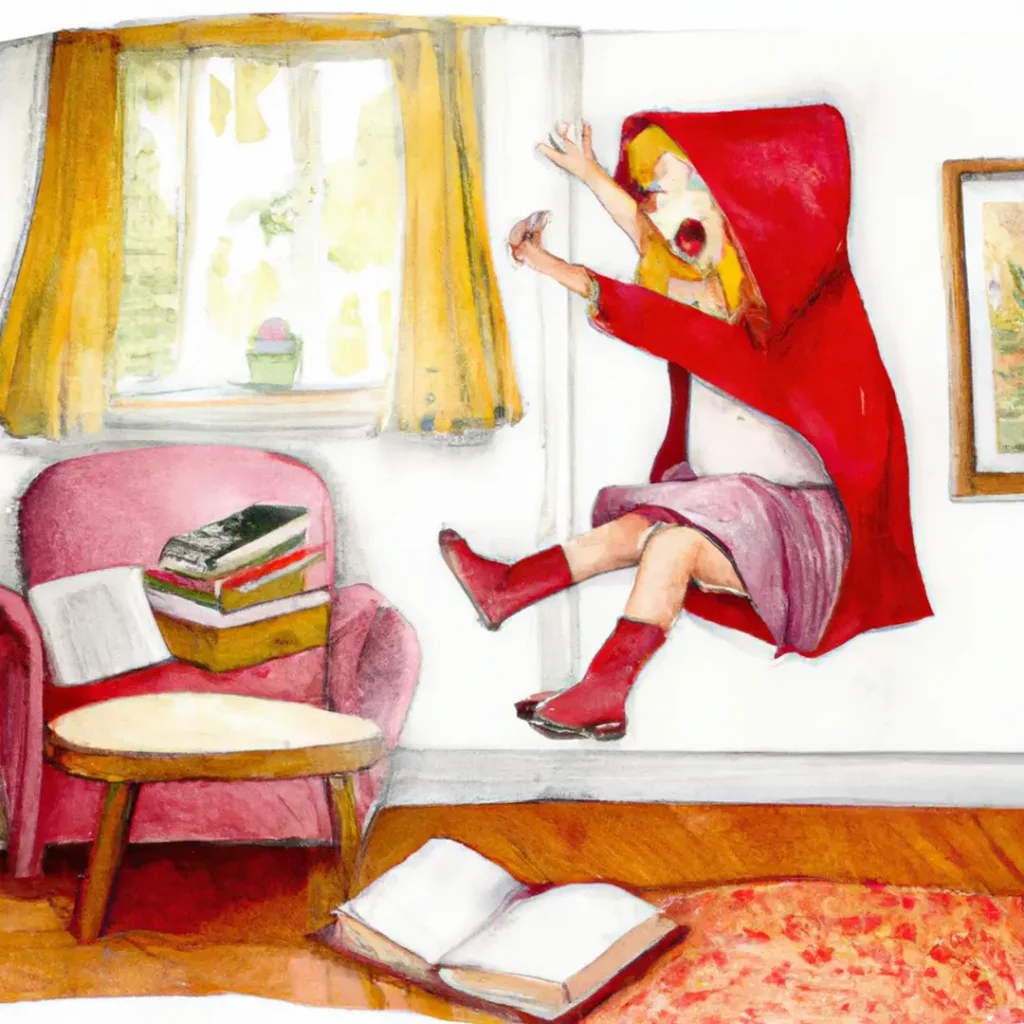
Weave classic tales with poetic threads in Fairy Tale Poems. Here, students choose a well-known fairy tale and reimagine it in a poetic form. Whether it’s “Cinderella” or “The Ugly Duckling”, students distill the essence of the tale into verse, preserving its magic and adding their unique twist. This game blurs the lines between narrative and poetry, and encourages a creative reinterpretation of familiar stories. It would also be fun to update and re-do nursery rhymes.
32. Shape Poems
Make words dance and form images with Shape Poems. In this visually engaging game, students pen poems where the arrangement of words on the page forms a shape that represents the poem’s subject. If writing about a moon, the poem could curve into a crescent; if a tree, the words could branch out. This activity pushes students to think about the visual element of writing, ensuring their poems are as aesthetically pleasing as they are meaningful. Keep the poems simple and younger students will enjoy this one.
33. Karaoke Poetry
Turn up the volume and embrace the rhythm with Karaoke Poetry. In this lively activity, students select or write poems and perform them using karaoke tracks as background music. The chosen tracks should match the poem’s mood or provide a contrasting backdrop. As students recite their poems with musical accompaniment, the classroom transforms into a stage of rhythmic expression. It’s an exhilarating way to add an auditory layer to poetry and hone performance skills.
34. Poetic Debate
Engage in lyrical arguments with Poetic Debate. Students pick a topical or abstract subject—like love, technology, or freedom—and are assigned opposing viewpoints. Their task is to argue their stance solely through poetic form, crafting their own writing. When ready, pairs or groups can recite their debate in this poetry challenge, making their case through rhyme, rhythm, and rhetoric. It’s a dynamic blend of critical thinking, creativity, and public speaking.
35. Soundtrack Poetry
Let cinema guide your poetic journey with Soundtrack Poetry. Begin by playing tracks from popular movie soundtracks in class. As students listen, they should let the music stir their emotions, inspire images, and evoke stories. Using the music as their muse, they then write poems that encapsulate what they felt or imagined. This activity demonstrates the evocative power of music and encourages students to draw connections between auditory sensations and verbal expression. High school students find this a lot of fun.
36. Weather Poems
Capture the essence of the skies with Weather Poems. In this atmospheric game, students explore different weather conditions—be it the tranquility of a snowy day, the ferocity of a storm, or the warmth of a sunny afternoon. Using these weather patterns as prompts, students pen poems that reflect the mood, imagery, and sensations associated with each condition. It’s a fantastic way to explore descriptive language and an opportunity to see how nature’s moods can mirror our own emotions.
37. Book Spine Poetry
Construct verses from the literary giants on your shelf with Book Spine Poetry. In this innovative game, students scour the classroom or library bookshelves, stacking books in such a way that their spines, read in sequence, form poetic phrases or verses. The result is a unique blend of titles that craft unexpected and delightful poetry. It’s a lesson in serendipity, creativity, and appreciation for the poetic potential lurking in everyday objects.
38. Poetry Mixtape
Blend lyrics and verses with the Poetry Mixtape game. Students begin by selecting a handful of their favorite poems or ones assigned in class. I like to sneak in a Shakespearean sonnet here. Their task is to find songs that resonate with these poems’ themes, emotions, or atmospheres. Students can then present their chosen songs alongside the poems, explaining the connections they’ve drawn between the two. This activity celebrates the universality of human experience as captured in both songs and poems, allowing students to explore how different artistic mediums can evoke similar sentiments.
39. Poetry Puzzle
Challenge analytical and creative skills with Poetry Puzzle. Students draft a poem and, once satisfied, cut it into individual lines or stanzas. These pieces are then shuffled and swapped with peers. The challenge? Reconstructing the poem from the jumbled lines. This game pushes students to look for thematic, rhythmic, and tonal cues to piece the poem back together, highlighting the importance of structure and flow in poetry.
40. Dialogue Poems
Dive into poetic conversations with Dialogue Poems. In this interactive game, students craft poems that form dialogues between two distinct entities. These could be between two people, a person and an object, or even abstract concepts. The poem unfolds through the back-and-forth of dialogue, revealing perspectives, emotions, and narratives. This format fosters depth of character and situation, encouraging students to think about multiple viewpoints within a single original poem.
41. Riddle Poems
Stimulate curiosity with Riddle Poems. Here, students compose poems that function both as artistic expressions and riddles to be solved. The goal is to describe something in a way that is not immediately recognizable but can be deciphered by the reader or listener through clever wordplay and hints. Once written, students can share their riddles with the class. It’s so much fun to see who can solve them first.
42. Interactive Poem
Co-create with the class using the Interactive Poem game. The English teacher or a student begins by suggesting a foundational element for a poem, such as a setting (like a haunted house) or an emotion (such as joy). The class then collaboratively decides on additional elements, providing input on characters, plot twists, or other thematic components. With these elements decided upon, the poem is then crafted. This activity is a lesson in collaboration and in the different ways poetry can be constructed.
43. Two-Minute Topics
Ignite the creative sparks with Two-Minute Topics. This high-energy game is all about spontaneity and quick thinking. Students are given a random topic—ranging from “midnight” to “a broken watch”—and have a mere two minutes to draft a poem about it. The tight timeframe encourages students to write instinctively, tapping into their immediate emotions and reactions. At the end of the round, some may choose to share their rapid creations, celebrating the varied interpretations of the same prompt.
44. Photo Prompts
Visualize and verbalize with Photo Prompts. In this evocative game, students are presented with a range of photographs, be they landscapes, portraits, or abstract shots. They choose one that resonates with them and craft a poem inspired by the image. The photograph might evoke a memory, a feeling, or a story in the student’s mind. By translating the visual into the verbal, students explore the interconnectedness of different art forms and learn how imagery can be a powerful catalyst for poetic expression.
45. Soundscapes
Immerse in auditory ambience with Soundscapes. This sensory game invites students to close their eyes and truly listen. Play various sounds, from the gentle patter of rain to the bustling noises of a city market. As students absorb these sounds, they’re encouraged to write poems that capture the mood, memories, and stories evoked by the audio. Soundscapes allow students to appreciate the power of sound as a narrative tool and to delve into the atmospheres and emotions different soundscapes can create.

